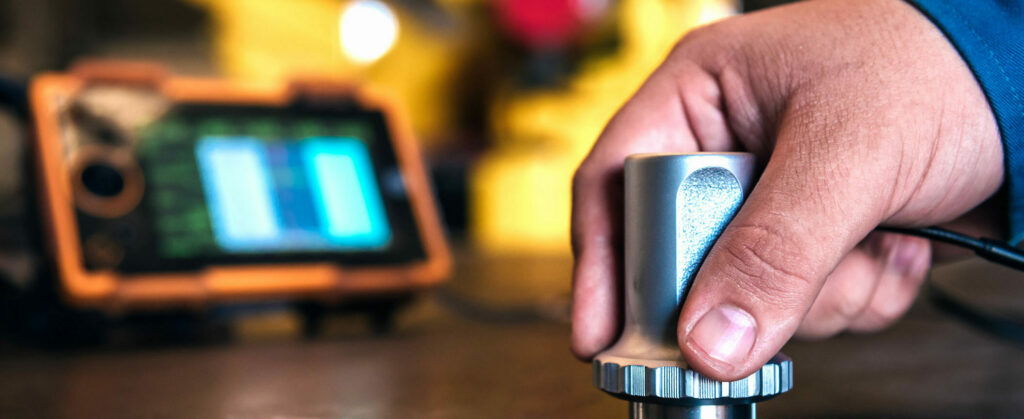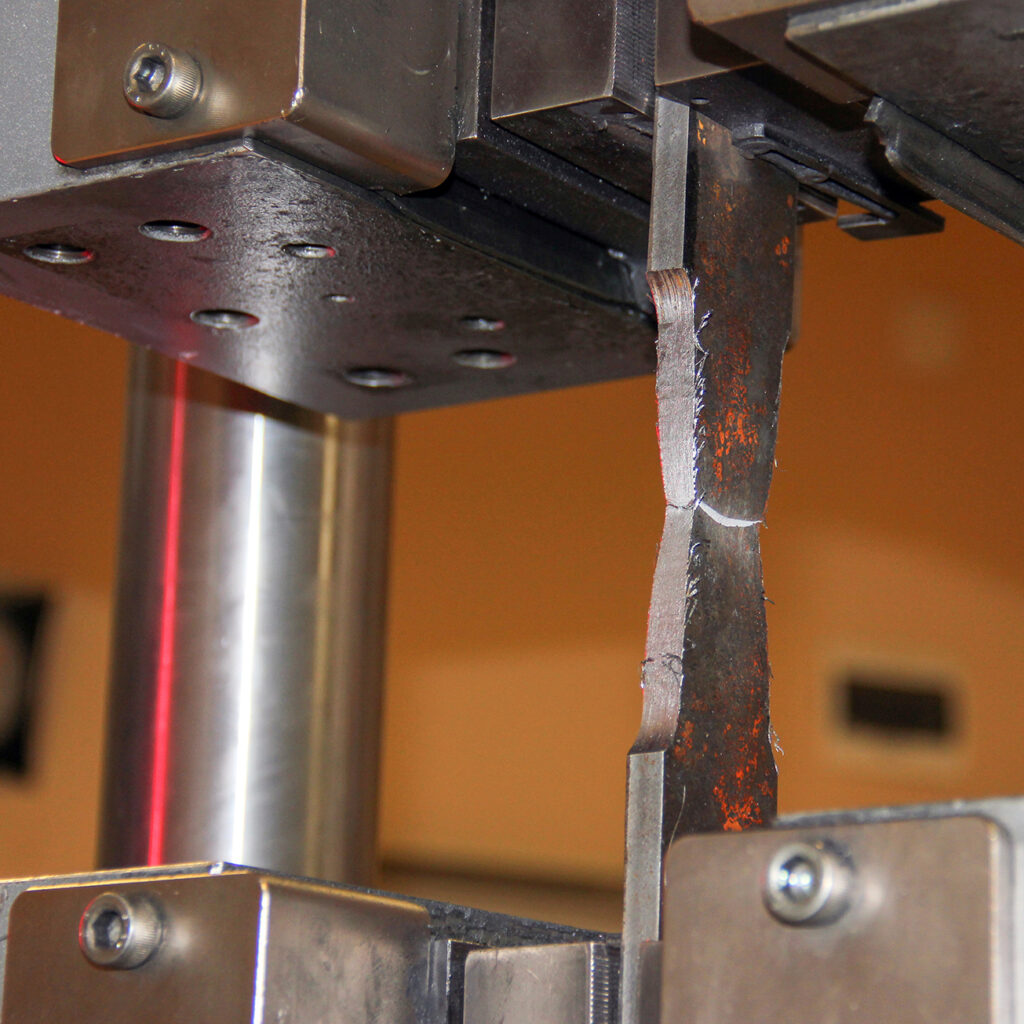6 things to look for on Non-Destructive Testing (NDT) Reports
and why you should focus on them
NDT methods are important testing techniques that are used in the steel industry to ensure quality of materials and products. But it can sometimes be challenging to read the extensive reports. At SteelTrace, we decided to make it easier for everyone to learn more about material testing! So in this blog post, we will tell you about 6 things that you should look for on NDT reports.
Steel material testing is crucial to determine material properties, verify compliance with material specifications and project requirements, and find deviations or defects.
More specifically, Non-destructive testing (NDT) methods are testing and analysis techniques that allow inspectors to check the integrity of materials and products, and look for any surface or volumetric indication, such as Ultrasonic testing, Radiographic examination, etc.

Example: Ultrasonice Testing
The advantages of NDT
1. There are no damages to the material being tested. This also allows that more pieces of material get tested, as well as the combination of different tests on the same piece of material, which in turn can help reduce inaccuracies in the results.
2. Some NDTs can be easily fully automated (such as ultrasonic testing, even with automatic AI recognition of defects!)
3. They can be performed on products that are already installed on site, to check the material integrity (like NDT on bridges, on pipeline welds, on pressure vessels to check the material thickness and verify that corrosion has not corroded the wall).
NDT reports
However, once the material testing is done, it can be challenging to go through the results included on the extensive NDT reports. These reports can also look very different, depending on where the testing was performed.
So, here are six things that you should look for when you read NDT reports:
1. Personnel Field of Application
Many inspectors or customers focus only on asking the NDT personnel their qualification certificate, or their card. If the certification is not expired, and it matched the method used, they are satisfied.
However, most people do not look at the field of application. An NDT person can be qualified in different fields of application, such as “forgings”, “castings”, “welds” or “multi sector”. You should make sure that the qualification purpose meets your product.
2. Instrument Calibration
The instrument needs to be calibrated according to recognized international standards, using certified reference material. It is not mandatory for the calibration company to be certified according to ISO 17025, but it’s beneficial. According to the ASME Code, the Yoke does not need to be calibrated, but only the weight does.
3. Testing Procedure
During manufacturing, the testing procedures may be revised. It is important that the certificate reports not only the testing procedure used, but also its revision number.
4. Essential Variables
All test procedures need to be qualified: the company that performs NDT needs to make sure that the procedure used is suitable to find indications. However, there are certain variables that – if changed – require a new procedure qualification. These variables are known as “essential variables”. Make sure that the test reports show these essential variables, and ask to see the original procedure qualification report.
5. Test Results
It is common to see NDT reports saying “Acceptable”, “Ok”, “Satisfactory”, however such statements do not provide any useful information. The appropriate test result sentence should make reference to the acceptance criteria and acceptance condition, such as “No indication exceeding the acceptance criteria”, or “No recordable indications”.
6. Map of Indications
When an acceptable indication is found, it should be reported on a map or anyway described in such a way that it can be identified further on. This allows you to clearly understand where the indication is, and keep it monitored during the component life cycle.
The SteelTrace solution
SteelTrace can provide you with a digital platform, which gather all test reports in real-time, and in a standardised format. This will prevent you from waiting or wasting time on finding the right information. SteelTrace also ensures that all the data is secured, using Blockchain technology, which in turn prevents fraud and guarantees the authenticity of the test results.
If you want to know more about the SteelTrace solution, make sure to sign up for a product demo! You can register at your preferred time using the link below:




